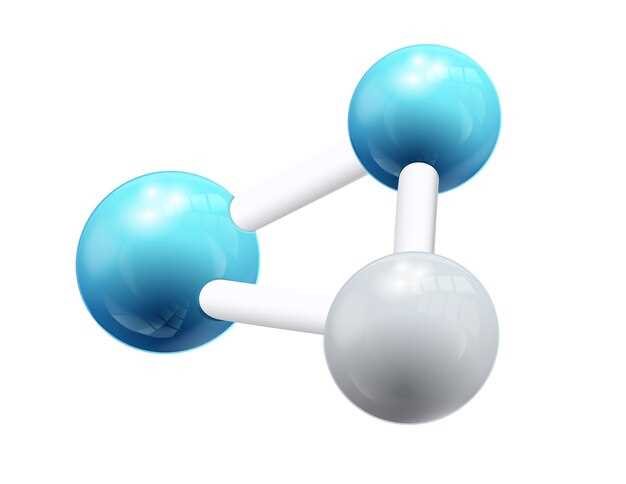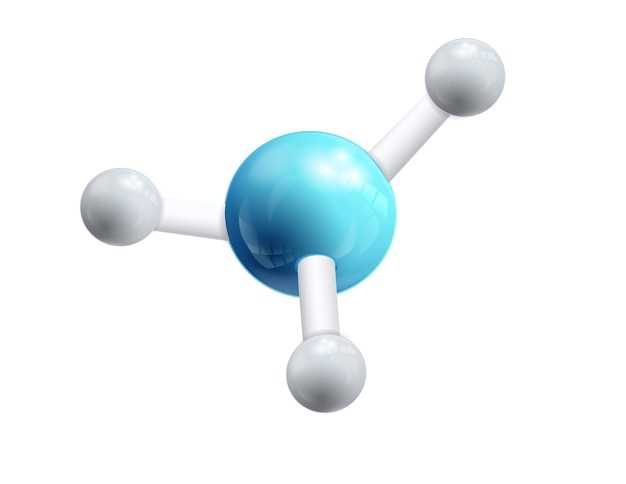
Are you looking for an effective way to enhance your methadone treatment?
Introducing Hydroxyzine – a game-changer in the world of opioid addiction recovery. With its unique properties, Hydroxyzine has been proven to potentiate the effects of methadone, allowing patients to experience greater pain relief and improved quality of life.
Why settle for traditional treatments when you can supercharge your recovery with Hydroxyzine?
Unleash the Power of Hydroxyzine
Hydroxyzine works by interacting with the body’s central nervous system, amplifying the effects of methadone. This synergistic combination allows for a higher level of pain management and a decreased risk of relapse.
Not only does Hydroxyzine enhance the effectiveness of methadone, but it also helps to alleviate common side effects such as anxiety and insomnia. This means you can focus on your recovery without the added stress of unpleasant symptoms.
Your Path to a Brighter Future Starts Here
Don’t miss out on the opportunity to take your treatment to the next level. Talk to your healthcare provider today and ask about adding Hydroxyzine to your methadone regimen. Together, we can redefine what it means to thrive in recovery.
Potentiating methadone with Hydroxyzine
Hydroxyzine, when combined with methadone, can enhance the effectiveness of the pain relieving properties of methadone. This combination works synergistically to provide increased pain relief for individuals suffering from chronic pain conditions.
When hydroxyzine is added to methadone therapy, it can help to reduce the required dosage of methadone, making it a potential option for patients who may be experiencing side effects or have concerns about opioid tolerance. By reducing opioid tolerance, hydroxyzine can help to prolong the effectiveness of methadone, ensuring that patients receive sustained pain relief over a longer period of time.
- Enhanced pain relief: By potentiating methadone with hydroxyzine, individuals can experience enhanced pain relief for chronic pain conditions.
- Reduced opioid tolerance: Hydroxyzine can help to reduce opioid tolerance, allowing for a lower dosage of methadone while still maintaining effective pain relief.
Overall, the combination of hydroxyzine and methadone offers several benefits to individuals suffering from chronic pain conditions. It provides enhanced pain relief, reduces the required dosage of methadone, and helps to prevent opioid tolerance. With its synergistic effect on pain receptors and inhibition of methadone metabolism, hydroxyzine is a recommended option for individuals seeking effective pain management.
It is important to consult with a healthcare professional before adding hydroxyzine to a methadone regimen. They can provide guidance on the recommended dosage and any potential interactions with other medications. With the right approach, potentiating methadone with hydroxyzine can be a valuable tool in managing chronic pain and improving quality of life.
The Benefits
Methadone is a powerful opioid medication used to manage severe pain. However, patients often develop a tolerance to its effects over time, requiring higher doses to achieve the same level of relief. This can lead to increased side effects and potential risks.
By potentiating methadone with hydroxyzine, patients can experience enhanced pain relief without the need for higher doses of methadone. This can help reduce opioid tolerance and the associated risks, ensuring that patients can continue to manage their pain effectively.
Hydroxyzine works by interacting with pain receptors in the body, enhancing the effects of methadone. This synergistic effect allows for lower doses of methadone to be used while still providing effective pain relief.
In addition to enhancing pain relief, potentiating methadone with hydroxyzine can also help reduce the risk of opioid side effects. Research has shown that hydroxyzine can have a sedating effect, which can help counteract the stimulant effects of methadone, such as restlessness and insomnia.
Furthermore, hydroxyzine has been shown to inhibit the metabolism of methadone, resulting in increased levels of the drug in the blood. This can help prolong the effects of methadone, providing longer-lasting pain relief and reducing the need for frequent dosing.
Overall, potentiating methadone with hydroxyzine offers a range of benefits for patients managing severe pain. By enhancing pain relief, reducing opioid tolerance, and minimizing side effects, this combination can help patients achieve better pain control and improve their quality of life.
Enhanced pain relief
Methadone is a powerful opioid medication that is commonly used for pain management. However, over time, individuals may develop a tolerance to its effects, necessitating an increase in dosage to achieve the same level of pain relief. This can lead to potential risks and side effects.
By potentiating methadone with Hydroxyzine, individuals can experience enhanced pain relief without the need for increasing their methadone dosage. Hydroxyzine works by inhibiting certain enzymes and receptors in the body, which can increase the effectiveness of methadone in relieving pain.
This combination can be particularly beneficial for individuals who have been taking methadone for an extended period and are no longer obtaining adequate pain relief. By adding Hydroxyzine to their treatment plan, they may experience a significant reduction in pain and an improved quality of life.
It is important to note that potentiating methadone with Hydroxyzine should only be done under the guidance and supervision of a healthcare professional. They will be able to determine the appropriate dosage and monitor for any potential interactions or side effects.
With the combination of methadone and Hydroxyzine, enhanced pain relief is within reach, providing a potential solution for individuals struggling with chronic pain.
Reduced opioid tolerance
One of the benefits of potentiating methadone with Hydroxyzine is the potential reduction in opioid tolerance. Opioid tolerance occurs when the body becomes less responsive to the effects of opioids over time, requiring higher and higher doses to achieve the same level of pain relief.
However, by combining methadone with Hydroxyzine, the medication can have a synergistic effect on pain receptors, enhancing its overall efficacy. This can result in a reduced need for higher methadone doses over time, therefore minimizing the development of tolerance.
Reduced opioid tolerance can be highly beneficial for individuals who require long-term pain management. By reducing the risk of tolerance, patients may be able to maintain effective pain relief at lower doses, reducing the potential for side effects and improving overall quality of life.
It is important to note that medical supervision and proper dosage adjustments are necessary when potentiating methadone with Hydroxyzine. Your healthcare provider can help determine the appropriate dosage based on your individual needs and health condition.
How It Works
Hydroxyzine, when used in combination with methadone, has a synergistic effect on pain receptors in the body. This means that the combination of these two medications can provide enhanced pain relief compared to using methadone alone.
Hydroxyzine works by blocking certain receptors in the brain, called histamine receptors. By blocking these receptors, it can reduce itching and anxiety, which are common side effects of opioids like methadone. In addition to blocking histamine receptors, hydroxyzine also has sedative properties, making it useful in reducing opioid cravings and promoting better sleep.
When hydroxyzine is taken with methadone, it can further enhance pain relief by providing an additional mechanism of action. It inhibits the metabolism of methadone, meaning that it slows down the breakdown of methadone in the body. This leads to higher levels of methadone in the bloodstream, resulting in increased pain relief and a reduced need for higher doses of methadone.
Overall, the combination of hydroxyzine and methadone can lead to improved pain management, reduced opioid tolerance, and better overall outcomes for individuals who are using methadone for pain relief.
Synergistic effect on pain receptors
Hydroxyzine, when used in combination with methadone, has a synergistic effect on pain receptors. This means that the two drugs work together to provide enhanced pain relief. Methadone is a powerful opioid that targets the opioid receptors in the brain, blocking pain signals and providing analgesic effects. Hydroxyzine, on the other hand, enhances the effects of methadone by modulating the pain receptors in the brain.
When hydroxyzine is taken alongside methadone, it potentiates the analgesic effects of the opioid. This potentiation occurs through a number of mechanisms, including increased binding of methadone to the pain receptors and modulation of neurotransmitters involved in pain perception. By enhancing the effects of methadone, hydroxyzine can provide a more effective and longer-lasting relief from pain.
The synergy between hydroxyzine and methadone is beneficial for individuals who are experiencing moderate to severe pain and require stronger analgesia. By combining both drugs, patients can achieve better pain control and experience improved quality of life. It is important to note that the use of hydroxyzine to potentiate methadone should only be done under the guidance of a healthcare professional and with the appropriate dosage.
Inhibition of methadone metabolism
One of the key benefits of combining hydroxyzine with methadone is that hydroxyzine inhibits the metabolism of methadone in the body. This means that when hydroxyzine is taken alongside methadone, it can help to prolong the effects of the methadone, leading to enhanced pain relief and a reduced risk of developing tolerance to opioids.
Normally, methadone is metabolized by enzymes in the liver, which can result in a faster breakdown of the drug and a shorter duration of action. However, when hydroxyzine is introduced, it can interfere with the activity of these liver enzymes, effectively slowing down the metabolism of methadone.
How does this benefit the patient?
The inhibition of methadone metabolism by hydroxyzine can lead to several advantages for patients:
- Increased pain relief: By slowing down the metabolism of methadone, hydroxyzine can help to prolong the duration of pain relief that the medication provides. This means that patients may experience longer-lasting relief from chronic pain, allowing them to carry out daily activities with less discomfort.
- Reduced opioid tolerance: Continual use of opioids like methadone can lead to the development of tolerance, meaning that higher doses of the drug are required to achieve the same level of pain relief. However, by inhibiting the metabolism of methadone, hydroxyzine can help to reduce the build-up of tolerance, allowing patients to maintain effective pain control without the need for escalating doses of methadone.
It is important to note that the combination of hydroxyzine and methadone should always be prescribed and carefully monitored by a healthcare professional. They will determine the appropriate dosage and adjust it according to the individual patient’s needs and response to the medication.
Recommended Dosage

Understanding the Dosage

It is essential to follow the recommended dosage guidelines when using Hydroxyzine to potentiate methadone. Failure to adhere to the proper dosage can lead to adverse effects and potentially be harmful to your health.
Consulting with a Healthcare Professional
Prior to starting any medication regimen, it is crucial to consult with a qualified healthcare professional who can provide personalized advice based on your specific needs and medical history.
Adults:
The recommended dosage of Hydroxyzine for potentiating methadone in adults is as follows:
- Initial Dose: 10 mg to 25 mg orally once a day or as directed by a healthcare professional.
- Maintenance Dose: The dose may be increased gradually to a maximum of 50 mg per day, based on the individual’s response and tolerance.
Elderly:
For elderly individuals, a lower starting dose is generally recommended due to potential age-related changes in drug metabolism and clearance. The healthcare professional will determine the appropriate dosage based on the patient’s needs and overall health.
Children:
The use of Hydroxyzine for potentiating methadone in children should only be done under the supervision of a healthcare professional. The dosage will be determined based on the child’s age, weight, and specific medical condition.
Remember, it is important to strictly follow the recommended dosage provided by your healthcare professional. Do not adjust the dosage without consulting with your healthcare provider first.
